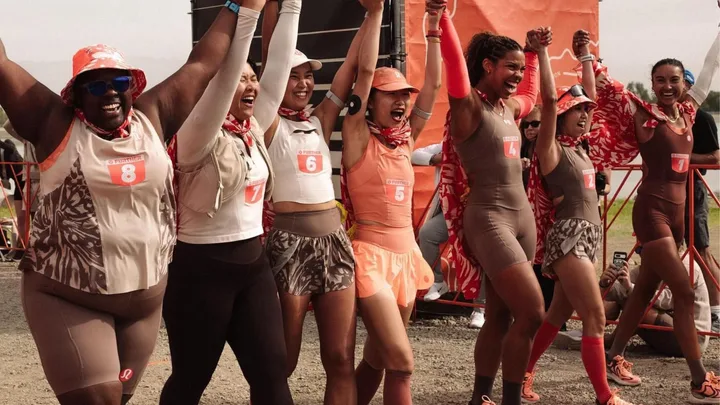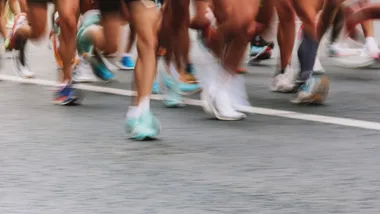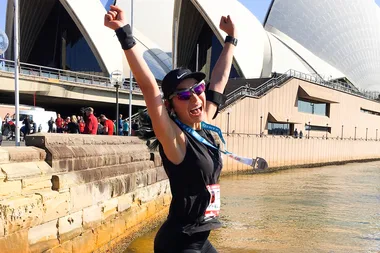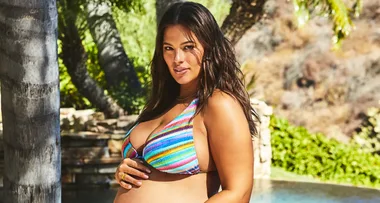What would women be able to achieve if they were truly supported to do so?
What new frontiers could open if they were given the same tools, training, data and support as men? What if they were told to dream big and supported to get there?
It’s the question the team at lululemon have been asking themselves, looking specifically at the arena of women’s sport. Their latest endeavour is an ultramarathon called FURTHER, completed in association with the Canadian Institute of Sport Pacific (CIS Pacific), aiming to overturn centuries of male-specific focus in the sporting (particularly running) world.
In doing so, they have proven how much further women can go when they are supported to do so.
Before we look at the amazing feats that the 10 FURTHER female athletes have completed across six days, we’re going to take a step back in time and examine just how recently women’s sport has been taken seriously.
How Have Women Been Excluded From Elite Sporting Opportunity?

Back in 1967, a young woman called Kathrine Switzer was encouraged by her coach to embark on the longest ‘official’ run a woman had ever done. She became the first woman to run a certified marathon, the Boston Marathon.
Switzer signed up using her initials, and there was no outright rule stating that women couldn’t partake in the race. Yet, two miles in, she was attacked by an official who tried to pull her off the course due to her gender.
She ended up getting free of his clutches, finishing the race, and proving that women are capable of going just as far, if not further, than men (and that they deserve the opportunity to prove it). That was just 47 years ago, and since then progress has been slow going.
Unfortunately, women have consistently been under invested in when it comes to sport. For example, we have seen the meteoric rise of Australia’s national female soccer team, The Matildas in the last year, their success made possible by collective bargaining agreements made in 2023. These agreements offer equal financial support to the male team, allowing The Matildas to train in the same professional manner as the Socceroos, without needing to take time off to pursue a second income stream. They are still underpaid, however, due to unequal prize money in competitions such as the FIFA World Cup.
It’s not just entrance to sport and lack of financial backing that women have struggled against, it’s also a complete gap in empirical data about their bodies and the science of sport. As women have a monthly menstrual cycle, most of the research scientists have completed on the body is studied on men, who don’t experience as many fluctuations that can ‘skew data’.
Women have been trying to reach the upper echelons of extreme sporting achievement essentially blind. Not to mention that their apparel has not been delivering to meet their needs on the track.
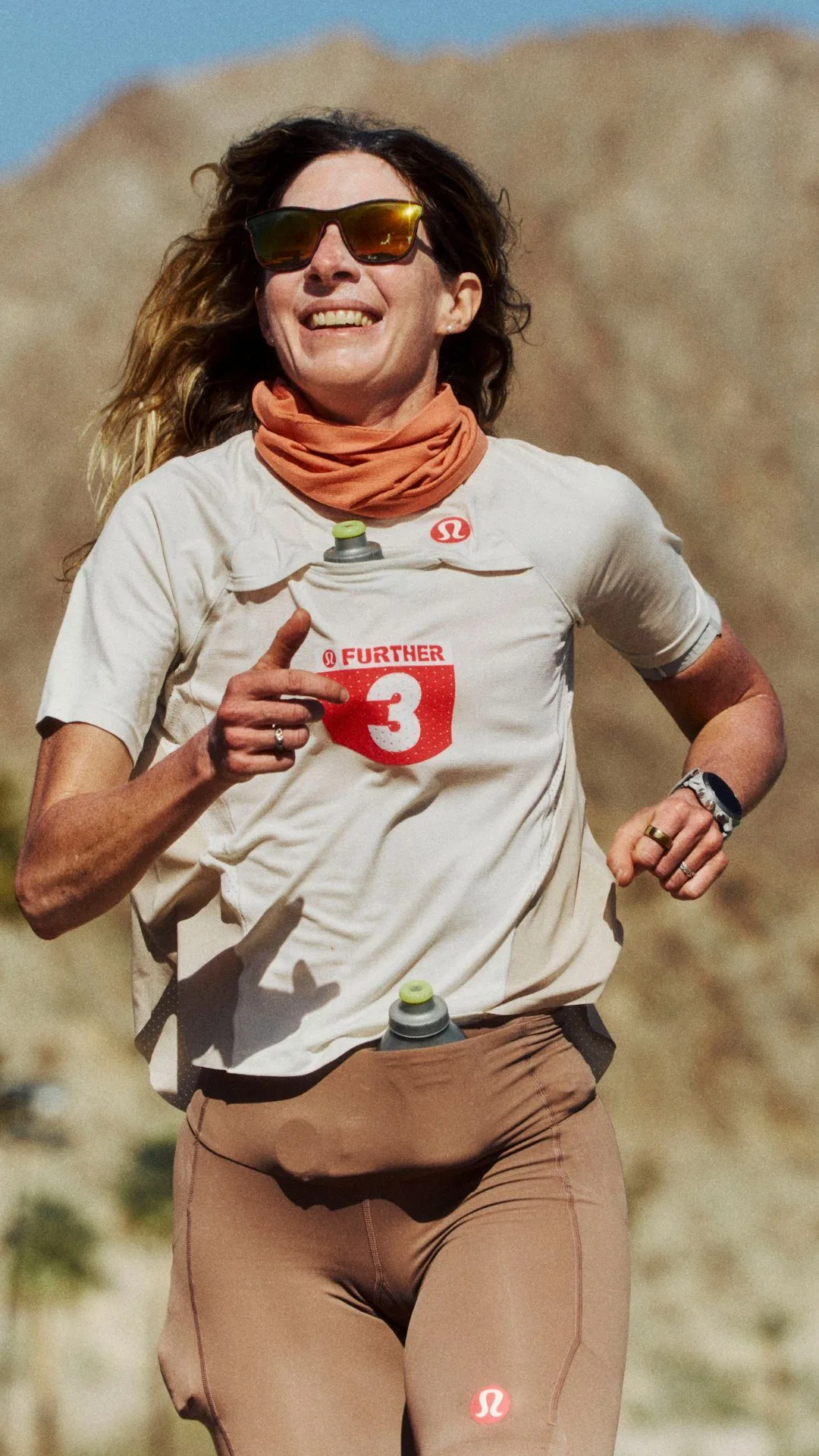
One of the FURTHER athletes Camille Herron had been taping water bottles to her torso with sticky tape as women’s clothing doesn’t allow enough storage for fluids needed throughout endurance runs. Another athlete, Montana Farrah-Seaton, was having trouble wearing hats to protect her from the sun as she couldn’t get her high ponytail to fit in them.
These are just a few examples, but there are so, so many more. It’s clear that sporting achievement, financial support and sports science research has revolved around men, and even deliberately excluded women, for far too long.
“Women have historically been overlooked and underserved in athletics, and as a brand committed to helping all people feel their best, we have a responsibility to create more equity for our communities by investing to close this gap,” said Nikki Neuburger, Chief Brand Officer, lululemon, when discussing their inspiration for FURTHER.
“When supported with innovation and resources, we are confident women will continue to redefine the limits of what’s possible. This is the motivation and purpose behind our FURTHER initiative.”
So, what did lululemon do differently?
The brand has made a $5 million investment into women in sport, creating a state-of-the-art ultramarathon course and working with the CIS Pacific to properly study the women running the race in the months leading up to and throughout the race itself.
The detailed research was designed to not only help the 10 FURTHER athletes achieve their full potential (from monitoring blood oxygen and discovering the best kind of nutrition for their bodies) but also to provide scientific data to inform more women’s sporting journeys in future.
What Happened At The lululemon FURTHER Ultramarathon?
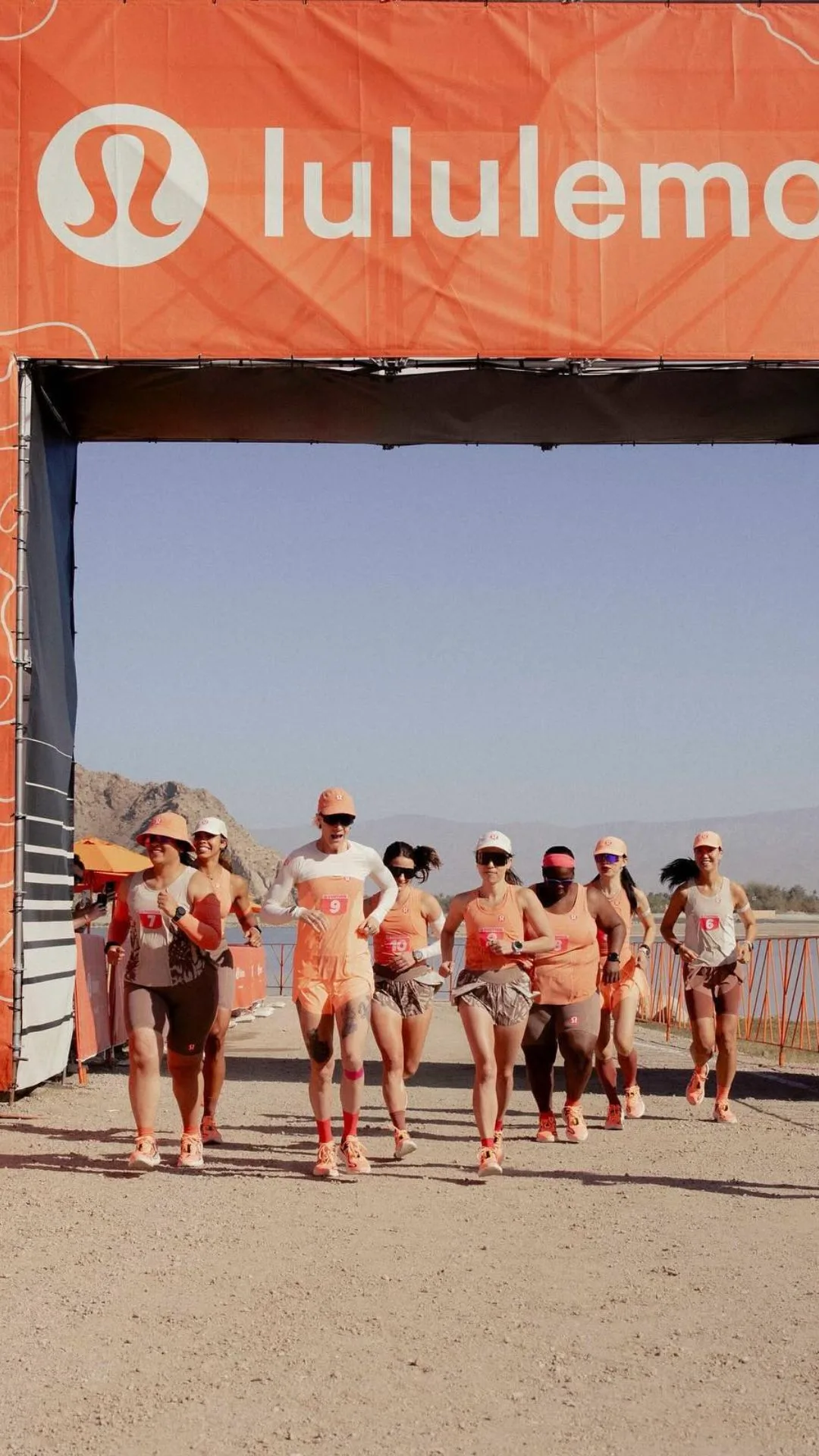
The ultramarathon took place at a certified 4 kilometre loop at Lake Cahuilla in La Quinta, California, with the opportunity for the women to set distance and time-based world records.
10 athletes from around the world were challenged to see just how far they could go, running the longest distance they ever have (and even further than others ever have before). The contestants were as follows:
- Montana Farrah-Seaton (Age: 27): An Australian Ultrarunner, Strength and Conditioning Coach, Model
- Stefanie Flippin (Age: 34): Coach and Ultrarunner, BIPOC Advocate, Doctor
- Camille Herron (Age: 42): Ultrarunner, World Record Holder
- Kayla Jeter (Age: 34): Runner, Strength & Wellness Coach
- Xiaomeng Jia (Age: 38): Marathon Runner, Entrepreneur
- Yoon Young Kang (Age: 44): Ultrarunner, Judo Black Belt, Joy Seeker
- Vriko Kwok (Age: 32): Brazilian Jiu-Jitsu Athlete, Runner, Entrepreneur
- Mirna Valerio (Age: 48): Ultrarunner, Author, Adventurer
- Devon Yanko (Age: 41): Ultrarunner, Coach & Mentor, Food Entrepreneur
- Leah Yingling (Age: 32): Ultrarunner, Biomedical Engineer, Women’s Advocate
lululemon were sure to bring in a range of runners, with different backgrounds, running histories and body types, proving that everyone can go further when they are properly supported to do so.
There are so many stories that the FURTHER runners have to tell, each with their own agenda. For example, Camille Herron, is an existing world record holder who set out to beat the ultramarathon distance record for six days (and even get close or beat the men’s record). Then there was the inspiring story of Vriko Kwok, who had previously only run a 5k before signing up for a six day ultramarathon.
Kwok is a true inspiration, telling marie claire Australia that she set out to do this to prove that you don’t need to look a certain way to achieve greatness or to be a runner.
“Women in many senses were told, ‘You should be insecure about this’. But through it all, it’s about choosing our own reality,” she says.
“I was actually bullied really badly in school for running. You know, bullies would bellow, ‘elephant coming’. Because of FURTHER I got to repaint my reality. My relationship with running has always been, ‘Oh, I got bullied, it’s bad. You will never be able to run because you’re big, you’re slow’, but with FURTHER I got to do it all over again and I feel like the luckiest girl.”
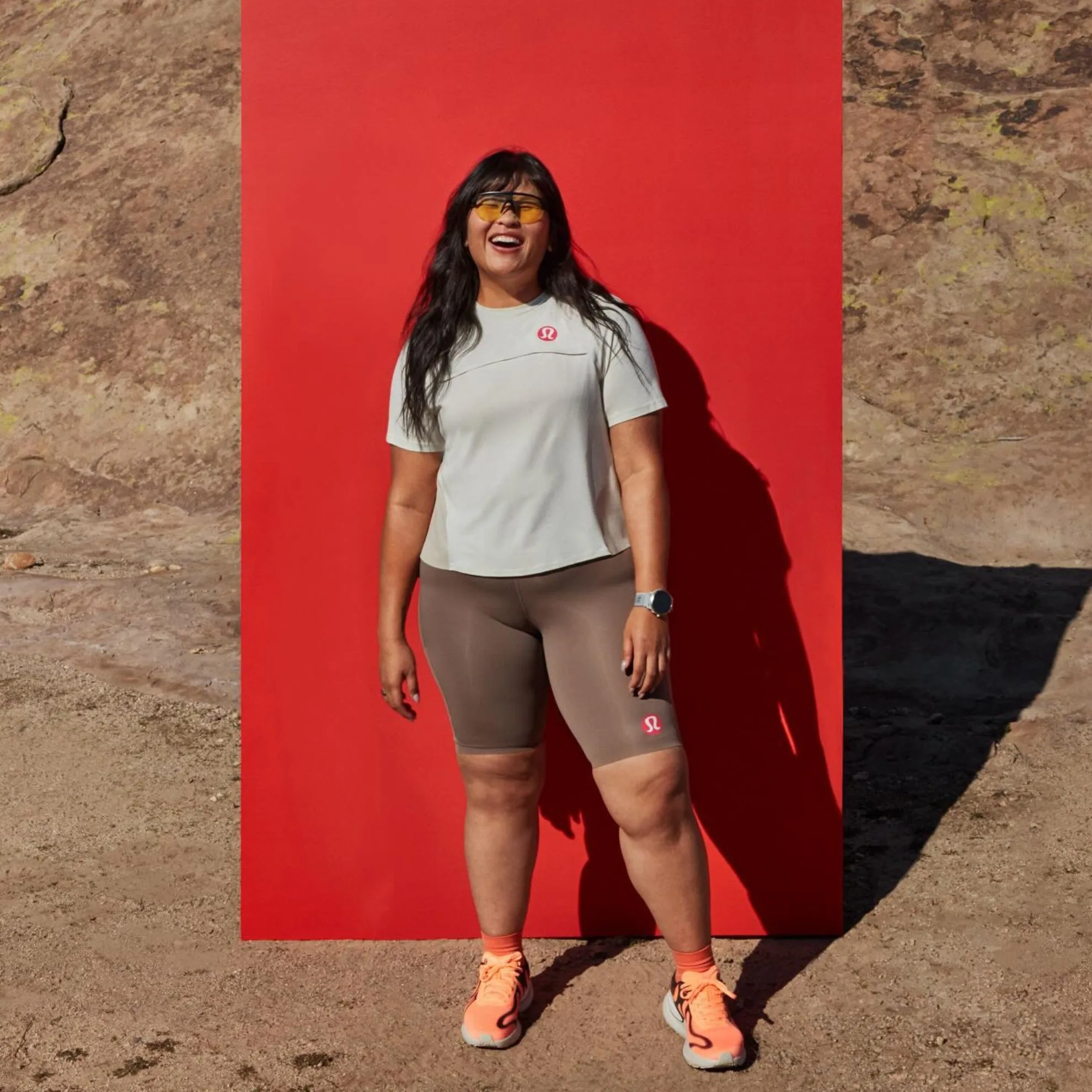
FURTHER was a full circle experience for Kwok, who managed to run a total of 188.47 miles, which equates to 303.3 kilometres. That is nearly 7.2 marathons in a 6-day race. Talk about going FURTHER, and you’ll see that Kwok is the embodiment of that.
Her epiphany moment came while doing some press for her big journey ahead. “One of the editors is my high school friend and she was saying to me that after hearing my story, ‘I’m sorry that I didn’t say anything when the bullies were doing that to you’,” she says.
“I really want to explore my fullest potential and what is at the other end of possibility. I’ve come out feeling like I’m possible and that all women are possible,” she says.
Of course, like the 10 other FURTHER athletes, Kwok says that she was able to achieve this feat due to the support of science, of lululemon, and her FURTHER teammates and coaches.
“A privilege of being part of FURTHER is that I have access to all of the science and all of the data…we really built it up over time. I think that was a big part of not tiring myself out. Steph (Vriko’s coach) started believing in me when I was actually like, not too sure about the whole thing. I’m bigger, I’m slower, I get out of breath… it’s only through her words that I found the affirmation that I really needed.”
We also had the opportunity to talk with Montana Farrah-Seaton, a powerful young Australian athlete who set out to go the furthest she’d ever gone.

“When this idea was first presented to me it was when Nedd (Brockmann) was running across Australia… I was like, if he can do something like that what’s stopping me from doing this?” she tells marie claire Australia.
Her goal from the start had always been to achieve 100km a day for six days. “I just want to see what’s possible for me,” she says.
We can’t help but ask if people tell her she’s crazy when she tells them what she’s about to do.
“Yeah, a little like that. [They ask], ‘Why?’,” she says. “When I tell people I, I don’t see it. It is ‘amazing’ but… I’ve sort of become desensitised to it myself and it’s a way of me coping, like, ‘it’s just 100k a day, that’s just four lots of 25′.”
Working with lululemon has been a huge part of Farrah-Seaton realising her strength. “It literally feels like a second skin,” she says of the clothing they created for her run. “This is exactly how I want it and because it is exactly how I want it, I feel great, and when you feel great you just keep pushing on.
“For me to be a part of something that is specifically designed for women and different body shapes…it’s been an unreal experience. At times I’m like, ‘You guys don’t need to do all this stuff’,” she says, recalling the generosity and dedication of the team to perfect their kits.
Just some of the tweaks Farrah-Seaton has made include shortening the shorts to allow for more movement, keeping the sports bras comfortable and supportive without digging into her lateral muscles, and ensuring there is ventilation in the bra to allow for cooling. She also inserted a ‘high pony’ hole in her bucket hat to ensure her running hairstyle didn’t impact her ability to get shade out on the track.
“It feels like something I could wear to bed,” she says, which is a good thing given she wore the kit nearly nonstop for six days.
It’s also important to note that the FURTHER athletes have put themselves up as willing ‘guinea pigs’ in pursuit of better scientific research for women in sport.
“It’s been super interesting, coming from an athlete background, we never really had this,” she says. “I remember when I was playing basketball for Australia, it was skin folds and tests for your yo-yo and vertical jump, things that were specific to the sport but not understanding our bodies.
“For me this has been a super interesting process to learn more about myself and what my body is capable of, but also once the research comes out…what I’m super excited about is, ‘What it is within the female body that allows us to go further?’. I’ve always known, women can deal with pain. We have this tolerance and I know I’ve always had that. What is that?” she asks. “Is it something within us that allows us to do that or is it something just within individuals?”
marie claire Australia were privileged enough to get to see the start of the race, as these 10 women kicked off their biggest journeys yet.

Farrah-Seaton was cool, calm, collected, and ran for six days to reach 508.26km, a startling distance to say the least, measuring two marathons a day for six days. To put it in perspective, it’s like running from Sydney to Coffs Harbour.
Find the full list of our 10 athlete’s FURTHER results below:
- Montana Farrah-Seaton ran 315.82 miles (508.26K)
- Stefanie Flippin ran 112.19 miles (180.5K)
- Camille Herron ran 560.33 miles (901.7K)
- Kayla Jeter ran 243.42 miles (391.7K)
- Xiaomeng Jia ran 300.54 miles (483.6K)
- Yoon Young Kang ran 313.27 miles (504.15K)
- Vriko Kwok ran 188.47 miles (303.31K)
- Mirna Valerio ran 142.63 miles (229.54K)
- Devon Yanko ran 313.27 miles (504.15K)
- Leah Yingling ran 400 miles (643.73K)
While all of these athletes achieved their FURTHEST distance yet, we also saw Camille Heron break a few world records on the course, proving that when you do support women, it’s true that they can achieve what we previously could only imagine. Herron’s new world records include:
- Women’s Six Day World Record at 560.33 miles (907.7K), surpassing the previous record by 11 miles
- Women’s World Best for 300 miles, 400 miles, 500 miles, 500K, 600K, 700K, 800K, 900K, surpassing previous world records by 8-19 hours.
- Women’s World Best for 72 hour, 92 hour, and 120 hour
We must note, these sorts of achievements don’t happen when people are forced to go it alone. As they say, if you want to go fast go alone, if you want to go far, go together.
That could not be more true of the FURTHER endeavour. On site, the athletes were given teams there to support them – family, friends, chefs, medical support, comfortable accommodation and leading researchers at the CIS Pacific there to help.
They had access to the data, knowing when to push and when to rest, how their body was faring and when it was time to refuel. They also had the infectious energy of their other teammates, pushing them forward when they hit (and then smashed through) the proverbial ‘wall’.
How Is FURTHER Changing The Future Of Women’s Sporting Apparel?

lululemon Beyondfeel Running Shoe, $249, lululemon
Of course, as a female-driven apparel company, FURTHER was also an opportunity for lululemon to work directly with the athletes to create a ‘kit of dreams’. The athletes worked for months with designers to tweak their outfits to their heart’s desire, as Montana told us when we spoke before the race.
In doing so, the lululemon team could see some of the gaps that women’s apparel was missing, and create new innovations to properly meet their athlete’s needs.
In the end, 36 new innovations were created, many to help athletes store vital elements to their run – energy and water – and to help cool them down with inbuilt ice coolers, all shaped by athlete insights and backed by research.
For runners playing along at home, a special edition colourway of the iconic beyondfeel shoe – designed to properly contour to women’s feet – has been released to celebrate the huge moment, as well as key pieces from the athlete’s FURTHER kits for those who may want to try out these new innovations. You can check out the shoes here, with further innovations due to launch in Australian spring 2024.
The CIS Pacific team are also continuing to work on finalising the empirical data to come out from the FURTHER research, with the results of the landmark study due to be released in spring 2024. marie claire will share this when it is finally available.
lululemon explains, “The ongoing research will dive deep into topical questions such as whether female ultrarunners have superior fatigue resistance compared to males, and will study areas that haven’t been explored such as the lived experiences of women ultrarunners and the physiological and biomechanical effects of six days of running.”
What Does FURTHER Tell Us About Supporting Women?
FURTHER is first and foremost a masterclass in what it means to support women to do their best in a sporting arena. However, it is an allegory for a much larger story about allowing women the space and resources they need to succeed.
While FURTHER asks us how far a woman could run with the right support, we can’t help but also ask: how many more women could we get in the boardroom with the right support? How much more could women achieve if they weren’t expected to be the sole caregivers in a family setting? What could a woman become if she was truly invested in?
The answer lies in what these women have proven in their tenacious efforts. That the possibilities are truly endless.
